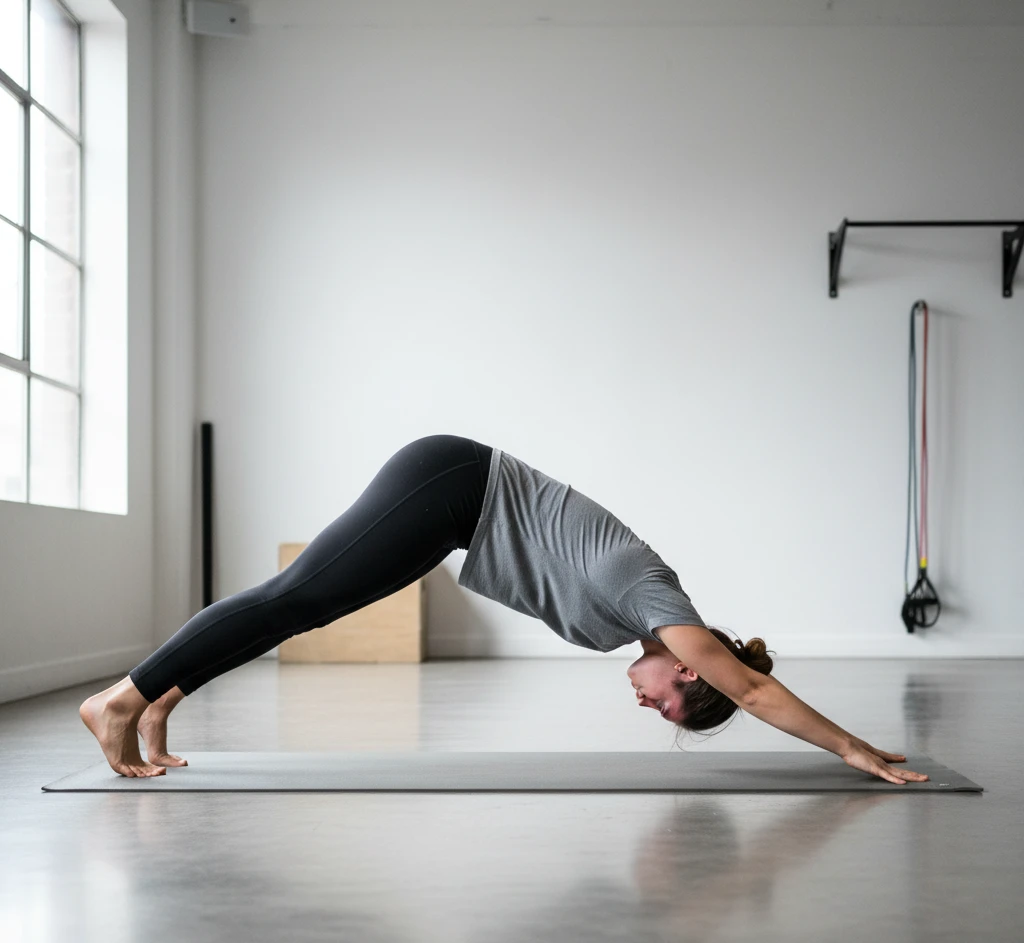Static Stretching: Short Holds vs Long Holds

Should you stretch before you run? Yes - but only for a few seconds at a time.
The Myth: Longer Static Stretching Before Exercise Prevents Injuries and Boosts Performance
Static stretching is often associated with injury prevention. However, research shows duration matters. A 2019 review examined the acute effects of static stretching on strength and power and concluded that hold time is the critical factor.
Short Holds: Minimal Impact
Holding a static stretch for ≤60 seconds per muscle group leads to trivial reductions in strength or power (~1-2%). This means a brief calf or quad stretch before your run won't significantly sap performance.
What the Research Shows
Studies consistently demonstrate that short-duration static stretches have minimal negative effects on:
- Maximal strength (1RM performance)
- Power output and jump height
- Sprint speed and acceleration
- Muscular endurance
The small (~1-2%) decrements are likely not noticeable in practical settings and may be offset by improved muscle compliance and reduced injury risk in some populations.
Long Holds: Performance Decline
Stretches lasting >60 seconds per muscle result in more pronounced decreases (4-7.5%) in force output and power. Jump height, sprint speed and maximal strength all drop after prolonged static stretching. This effect can last up to an hour.
The Science: Prolonged static stretching reduces muscle activation and neural drive. The stretched muscle experiences decreased excitability at the spinal cord level, reducing the number of motor units recruited during subsequent contractions. Additionally, the muscle-tendon unit becomes more compliant (less stiff), which can reduce the rate of force development needed for explosive movements.
| Stretch Duration | Performance Impact | Recommendation |
|---|---|---|
| ≤30 seconds | Negligible (~0-1%) | Safe for pre-workout |
| 30-60 seconds | Minimal (~1-2%) | Acceptable if needed |
| 60-120 seconds | Moderate (~3-5%) | Avoid before performance |
| >120 seconds | Significant (~5-7.5%) | Reserve for post-workout |
Why Does This Happen?
Several mechanisms contribute to performance decrements after prolonged static stretching:
- Neural inhibition: Reduced motor neuron excitability decreases muscle activation
- Reduced muscle stiffness: While increased compliance may reduce injury risk, it impairs the stretch-shortening cycle needed for power
- Altered muscle-tendon mechanics: Changes in the force-length and force-velocity relationships
- Fatigue effects: The muscle work required to maintain long stretches can induce local fatigue
Therefore, saving long static stretches for post-workout or separate flexibility sessions is wise.
Practical Warm-Up Protocol
Here's an evidence-based warm-up sequence that maximizes performance while minimizing injury risk:
Phase 1: General Aerobic Activity (5 minutes)
Light aerobic activity raises core temperature and increases blood flow to muscles:
- Light jogging or cycling
- Jumping jacks or rope skipping
- Rowing at low intensity
Phase 2: Dynamic Movements (5-10 minutes)
Dynamic stretches and movement prep activate the nervous system and improve range of motion without performance decrements:
- Lower body: Leg swings (forward/back, side-to-side), walking lunges, high knees, butt kicks, Cossack squats
- Upper body: Arm circles, torso rotations, arm swings, shoulder dislocations with band
- Full body: Inchworms, world's greatest stretch, dynamic spiderman with rotation
Phase 3: Optional Brief Static Stretches (10-30 seconds)
For particularly tight muscle groups, include brief static stretches. Keep them short and controlled:
- Calf stretch: 20 seconds per leg
- Hip flexor stretch: 20 seconds per side
- Hamstring stretch: 20 seconds per leg
Phase 4: Sport-Specific Movements
Finish with movements that mimic your upcoming activity at gradually increasing intensities:
- Runners: Strides or acceleration drills
- Lifters: Light sets with gradually increasing loads
- Team sports: Sport-specific drills at 50%, 75%, then 90% effort
When to Use Longer Static Stretches
Long-duration static stretching absolutely has a place - just not immediately before performance activities:
Post-Workout Flexibility Training
After training, when muscles are warm and performance doesn't matter, use longer holds (60-120 seconds) to improve flexibility:
- Muscles are warm and pliable, reducing injury risk
- No immediate performance demands
- Greater improvements in range of motion
Dedicated Flexibility Sessions
Separate flexibility or yoga sessions allow for extended stretching without compromising athletic performance:
- Schedule on rest days or at least 4-6 hours from training
- Focus on chronically tight areas
- Combine with breathing and relaxation techniques
Injury Rehabilitation
Under guidance from a physical therapist, longer static stretches may address specific mobility limitations or adhesions.
Special Populations
Hypermobile Individuals
If you're already very flexible, prioritize dynamic warm-ups over any static stretching. Excessive flexibility without adequate strength and control increases injury risk.
Older Adults
Brief static stretching may feel more comfortable and be better tolerated than high-intensity dynamic movements. A hybrid approach - gentle dynamic work plus brief static stretches - often works well.
Athletes with Current Injuries
Work with healthcare providers to determine appropriate stretching protocols. Some conditions benefit from specific stretching approaches while others require modified techniques.
Bottom Line: Static stretching isn't bad - but timing and duration matter. Keep pre-exercise static stretches under 30-60 seconds per muscle group to maintain performance. Save longer holds (60-120+ seconds) for post-workout or dedicated flexibility sessions. When in doubt, prioritize dynamic movements before training and static stretching afterward.
Key Takeaways
- Stretches ≤60 seconds have minimal impact on performance (~1-2% reduction)
- Stretches >60 seconds significantly impair strength and power (~4-7.5% reduction)
- Dynamic warm-ups are superior to static stretching for pre-exercise preparation
- Reserve long static holds for post-workout or separate flexibility sessions
- Individual factors (age, flexibility, injury history) should guide stretching choices